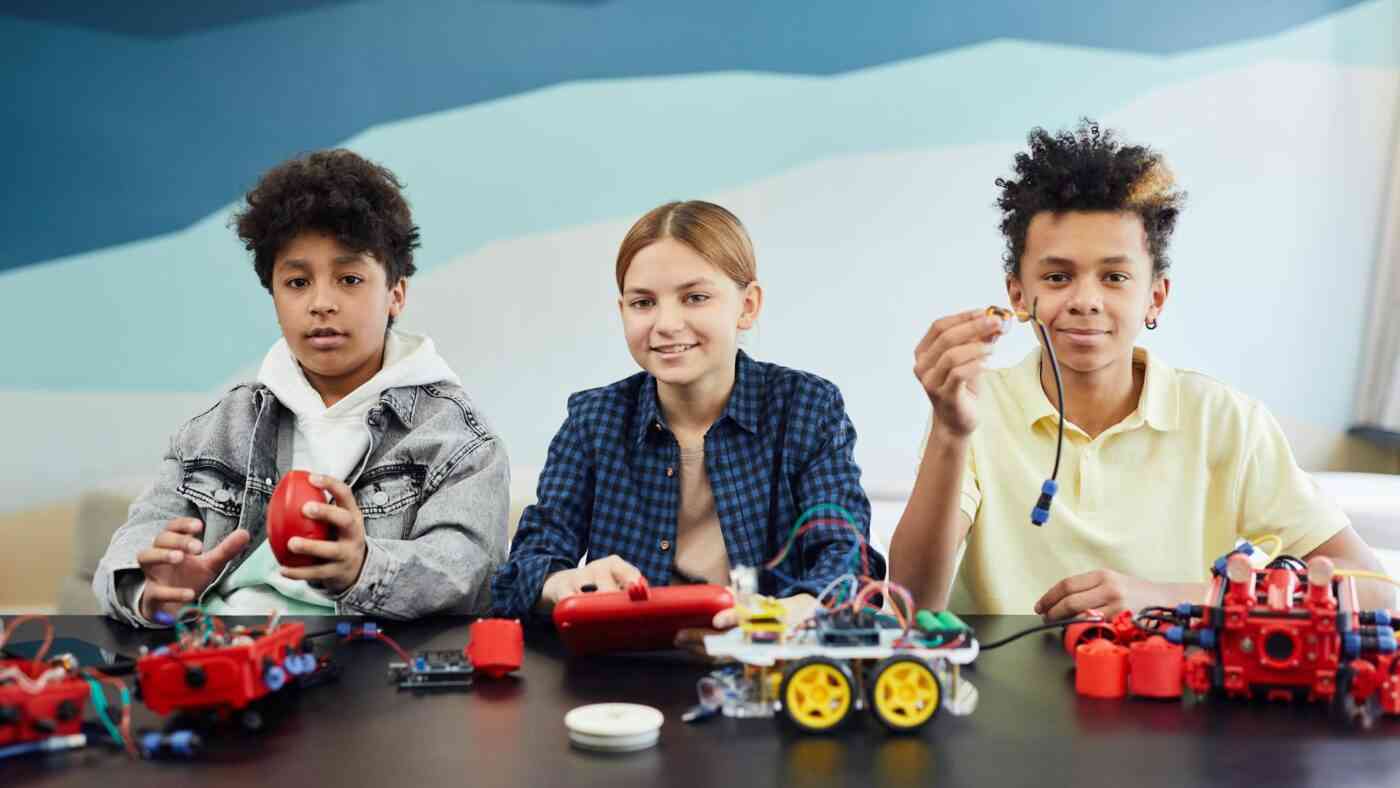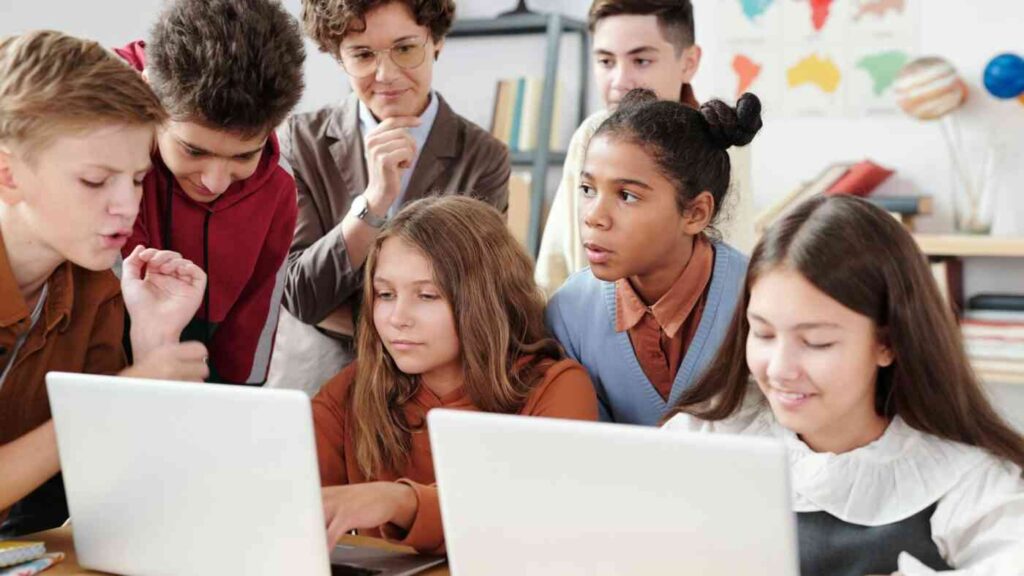Science
Mysterious 900-Year-Old Burials. What the Christian Graves Were Hiding
26 December 2025

Education is entering an intensive process leading to a change in the goals and principles of school work. It is moving away from the superiority of providing knowledge and teaching in favor of organizing student learning. It is worth exploring team problem-solving techniques that allow children to move from the level of accepting knowledge to the level of independent problem-solving.
Education system reformers are looking for optimal solutions for organizing learning in the realities of the 21st century. The time when memorization was the foundation of learning is clearly passing. Today, challenges count much more. Preferably those related to solving specific, real problems.
Project-Based Learning (PBL) is a multifaceted concept that engages individual students to work in small groups to address selected issues. It can be used to conduct classes within single classes and subjects, but can also serve to solve interdisciplinary tasks implemented in diverse age groups, and even in different institutions. In its classic form, PBL encompasses several activities:
Problem definition involves students considering issues related to its nature and possible causes of its emergence. These activities aim to frame the analyzed situation in an appropriate context. When working on a real challenge, it is necessary to consider the benefits that overcoming it will ultimately bring to project participants.
We recommend: The Recipe for Genius. How Ordinary Cities Ensured Extraordinary Development
The next step is worth conducting using brainstorming. The key here is to generate and discuss as many ideas as possible. It is not just about developing proposals for immediate use, but rather about their diversity and a kind of “non-obviousness”. To ensure the correctness and effectiveness of the process, it’s worth introducing certain rules: allow each participant to present their idea, refrain from evaluating concepts (this applies to both the facilitator and the students themselves), and instead encourage referring to others’ proposals while creating one’s solutions.

Creative solutions take concrete shape during the next step – prototyping solutions. A prototype can take various forms: a mock-up, storyboard, role-playing, or even preparing an object made from readily available materials such as paper sheets, popsicle sticks, or rubber bands. The goal of prototyping is to develop ideas generated during brainstorming and quickly present how the problem solution might look (and how it would work). Prototypes often reveal students’ thinking about their own needs and the conditions necessary to meet them. They also help identify unforeseen difficulties that the originator of a given solution may encounter. Focusing on creating simple prototypes also means that students can quickly and easily change their ideas, consider various “pros” and “cons”, and use emerging comments and opinions to modify and improve the developed solutions on an ongoing basis.
The testing phase is crucial for closing the whole process. It allows checking the effectiveness of the prototype in achieving the assumed goal. Ideally, this step takes place in an environment directly related to the defined challenge. Then, the proposed solutions can be most effectively tested in practice, in a real environment. Test results can provide students with important feedback on their ideas, as well as contribute to the emergence of further issues to consider. For example: Did what we created work as planned? If not, how can it be improved? Testing serves to stimulate critical thinking and objective reflection. The procedure allows looking once again at the creation process. It allows rethinking the way of defining expectations and assumed results. It enables students to verify their involvement, and usefulness of undertaken roles and activities. It provides information about students during their maturation. It allows not only to learn and acquire new skills but also to develop or modify represented attitudes or beliefs.
We recommend: The Fantasy Crisis. What Is Missing in Today’s Fictional World Productions?
Collaborative problem-solving contributes to the development of crucial competencies, useful not only in the learning process but also in everyday life. This reverses Seneca’s maxim: Non vitae, sed scholae discimus – we learn not for life, but for school. This is important because school is a value in itself for many. Consider how many aspire to graduate from Humboldt University in Berlin, a spectacular program at the Sorbonne, the University of Cambridge, or the London School of Economics. These are not institutions easy to enter. Upon obtaining a diploma, the graduate becomes part of a prestigious group. In many places, such a diploma can be very valuable and support the first steps towards a spectacular career. So why is it worth challenging the significance of words saying that school determines the meaning of our education?

Urlich Hammerschmidt, a school principal in Saxony, highlighted the need for changes in education in an article aptly titled: “Why Do Schools Change More Slowly Than Churches?” He emphasized that schools are multidimensional organizations, resistant to control through linking single causes and complex effects. Various variables influence individual results, including attitudes and engagement of individual teachers and students. Consequently, one can assess generalized effects, confirmed by exam test results, for instance, but it is difficult to examine the common causes of their diversity. Hammerschmidt’s article describes how the limitations imposed by administrative norms and rules confine school education. From its perspective, the quality of education is expressed in rankings of institutions and compilations of competition results, olympiads, or external exams. Such a formatted structure indeed limits learning merely to school expectations. Real life, however, suggests other solutions. The primary goal of learning is not to satisfy teachers or examiners but to meet the strategic life needs of the graduate. And this is precisely what collaborative problem-solving serves.
We recommend: How to Design Cities? Urban Planning Beyond Human Inhabitants
Joint work encompassing research, planning, implementation, and team reflection develops and strengthens critical thinking, problem-solving skills, taking responsibility, making effective decisions and purposeful engagement. It is important that the implemented project is challenging yet entirely feasible for students. It should encourage creative and personal involvement while providing a sense of satisfaction and agency.
Project work poses a significant challenge for teachers. It requires:
The project method is an action model that can shift the learning system from delivering and verifying knowledge to supporting the independent development of young people purposefully heading toward adulthood. By developing competencies related to multi-level reflection, cooperation, and effective action, students can gain a sense of responsibility, agency, and satisfaction. Who knows, maybe during the learning process, teachers themselves will find new inspirations and possibilities for performing their profession. After all, learning should not be confined to the school environment but should serve as an attractive prelude to adult life.
Translation: Klaudia Tarasiewicz
Read the text in Polish: Metoda projektu, czyli o przejściu od nauczania do zespołowego uczenia się uczniów